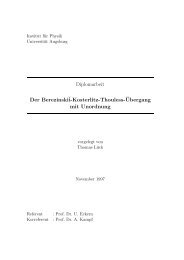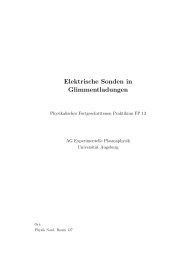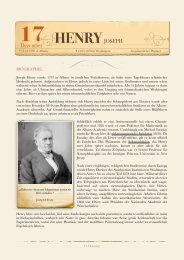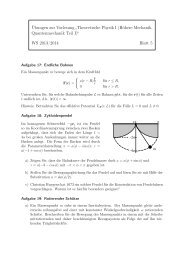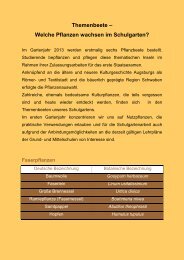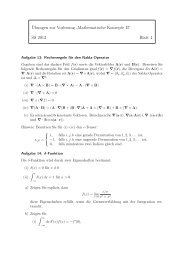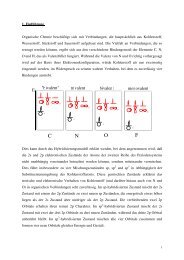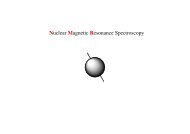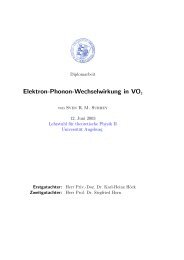PhD Thesis - Universität Augsburg
PhD Thesis - Universität Augsburg
PhD Thesis - Universität Augsburg
Create successful ePaper yourself
Turn your PDF publications into a flip-book with our unique Google optimized e-Paper software.
22 1. Models<br />
where ρ denotes the amount of charge transfer from the donors to the acceptors. The<br />
ionic Hubbard model serves as an appropriate effective model for the D − A chains, with<br />
the sites with even i representing the LUMO (Lowest Unoccupied Molecular Orbital) of an<br />
acceptor molecule, while sites with odd i represent the HOMO (Highest Occupied Molecular<br />
Orbital) of a donor. In the neutral state, these orbitals would be occupied by either zero<br />
or two electrons, respectively. The model parameters U and ∆ are used for an effective<br />
description of the microscopic parameters, like, e.g., the electron affinity of the acceptor<br />
molecules, the ionization potential of the donors, the Madelung energy gained by the pairs<br />
ionized due to the charge transfer ρ, and the Coulomb interaction in the D +ρ A −ρ pairs [83].<br />
Within this picture, ∆ is interpreted as the energy necessary to move an electron from the<br />
donor to the acceptor. The ionic Hubbard model will be studied in detail in Section 4.1 of<br />
Chapter 4.<br />
In quasi 1D materials like halogen-bridged transition metal chain complexes, conjugate<br />
polymers, or inorganic blue bronzes a similar on-site energy modulation can be effectively<br />
generated by the strong competition among the itinerancy of the electrons, electronelectron<br />
interactions and interactions of electrons with the motion of ions. In the adiabatic<br />
limit, the latter interactions can be taken into account within a purely electronic model by<br />
an effective potential<br />
H ion = ∆ ∑<br />
(−1) i n i + KL ( ) 2 ∆<br />
(1.44)<br />
2<br />
2 2<br />
i<br />
which in addition includes the elastic energy of a harmonic lattice with a “stiffness constant”<br />
K. This so-called adiabatic Holstein-Hubbard model will be studied in detail in Section 4.2<br />
of Chapter 4.<br />
The latter two extensions, the Peierls distortion and the ionic potential, obviously<br />
change the translation symmetry of the Hubbard model (1.21), since the extended models<br />
are only mapped onto themselves by a lattice translation by two sites. In momentum<br />
space, this corresponds to a reduction of the Brillouin zone by one half (from [−π/a, π/a]<br />
to [−π/2a; π/2a], with a being the lattice constant). For U = 0, a band gap opens at the<br />
new Brillouin zone boundaries, so these models represent effective two-band models.



